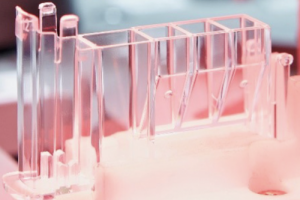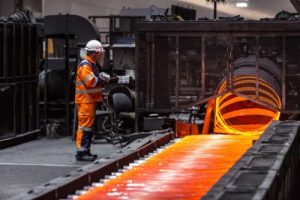Motoring: Jaguar and SEAT showcase "family-friendly" sports cars

JAGUAR’s exciting new F-Pace, billed as the company’s first family sports car, has already set tongues wagging at the Frankfurt Motor Show and if a theme is to emerge from this year’s event it can be summed up in one word – crossover.
Jaguar has set the tone early and has high hopes for the new car. It symbolised its lofty ambitions by getting the vehicle to perform a record-breaking 360 degree loop stunt ahead of its show debut (see video below).
The all-wheel-drive car was driven with daring precision by expert British stunt driver Terry Grant and the feat was intended to showcase the lightweight vehicle’s agility combined with its sports car speed and performance.
Grant undertook two months of intense physical and dietary training to ensure his body was prepared for the 6.5 G-Force, which is greater than the forces experienced by space shuttle pilots.
Months of planning went in to ensuring that both car and driver could complete the world record-breaking challenge. Precise physics, angles, speeds and dimensions were considered by a team of experts including structural engineers, mathematicians and safety experts.
Grant said: “Driving the world’s largest loop tonight was a very proud moment in my career. The F-Pace’s supreme performance credentials and rigid lightweight structure gave me complete confidence that I had the strength and driving agility needed. I am delighted to bring the Guinness World Record back to the UK and help Jaguar run rings around their competitors ahead of the motor show tomorrow.”
While Jaguar has become synonymous with hair raising stunts for their latest vehicle launches, the feat performed by Grant is still something remarkable – and it achieved exactly what Jaguar wanted by eclipsing show publicity from its rivals.
But the company has also been keen to stress there is still substance behind all the grandstanding. It says the F-Pace is packed full of innovative technology and features the world’s most-advanced in-car entertainment system, matched with super-fast wifi connectivity.
To celebrate the launch of the new car, Jaguar has said a special model called the First Edition, priced at £65,275 in the UK, will be available in strictly limited numbers and in the first year of production only. Powered exclusively by the 300PS 3.0-litre V6 diesel engine, the First Edition is distinguished by a unique metallic paint colour – Caesium Blue; a clear reference to the breakthrough C-X17 concept unveiled at the 2013 Frankfurt Motor Show.
Further highlights include 22-inch Double Helix 15-spoke wheels with grey finish and contrast inserts, Adaptive Dynamics, Adaptive LED headlights, gloss black fender vents and a panoramic roof.
Inside, the Windsor soft-grain leather seats in Light Oyster feature twin-needle stitching and an embossed houndstooth pattern influenced by the C-X17’s award-winning interior. The traditional Jaguar craftsmanship is intended to blend seamlessly with the configurable 10-colour ambient lighting, state-of-the-art InControl Touch Pro infotainment system and the 12.3-inch HD virtual instrument cluster.
Pricing for the F-Pace range starts from £34,170 rising to £51,450 for the S edition. The car will go on sale next year.
While Jaguar has set the bar high this has not stopped rival manufacturers from also using the show as a showcase for their own crossover vehicles.
Infiniti is pressing the case for its Q30, which the company describes as an “active compact” and a “new type of premium vehicle for a new type of consumer”.
The Q30 represents Infiniti’s first global entry into the fast-growing premium compact segment and the company is hoping it could finally be the car which leads to its breakthrough on the world stage.
The rhetoric used by the company is typical of one looking to capture the imagination of new buyers.
It states: “Designed for a new generation of buyers not willing to be defined by their choice of vehicle body type, the Q30 challenges convention with its bold character and daring shape.”
In addition to the SE model, Infiniti has been mindful of the prestige factor demonstrated by Jaguar, and said two bespoke versions of the Q30 will also be available – ‘Premium’ and ‘Sport’. Each will have its own unique design to enhance its exclusivity.
However, whether this will be enough to sell the car to its target market remains to be seen. The crossover market is becoming increasing more crowded and the buyer looking to combine sporty performance with family practicalities now faces a far greater choice than ever.
Infiniti president Roland Krueger is in little doubt about the car’s value. He said: “Q30 will accelerate the company’s strategy to become a leading global manufacturer of premium cars.”
If it is to conquer new markets then the company is at least mounting its campaign for global dominance on a firm footing.
Infiniti sold a record 136,700 new vehicles worldwide during the first eight months of 2015, representing an increase of 14% compared to the same period in 2014. The brand also set records in China, Asia & Oceania, and EMEA (Europe, Middle East & Africa).
Significantly, the Q30 will be the company’s first ever vehicle built in Europe, at the newly-upgraded production facilities in Sunderland. The £250m investment has also led to the creation of hundreds of new jobs, so if people do buy the vehicle at least they will be supporting the UK manufacturing sector.
The same cannot be said for Volkswagen’s new Tiguan but it is also keen to capture a slice of the crossover market.
The German firm is using its domestic show to display four versions of the new Tiguan, one of which is the sporty Tiguan R-Line.
The second generation of the company’s best-seller is the first VW SUV to be based on the group’s new MQB (modular transverse matrix) platform. This is said to improve all of the vehicle’s properties and combined with a 50kg weight reduction on the previous model, the company is hoping buyers will be able to see beyond the badge snobbery of its more premium rivals and opt instead for the Tiguan’s proven reliability.
VW stable mate SEAT is mounting its own assault on the segment with its Leon Cross Sport show car. It says the car offers the performance of a compact sports car with coupe looks and the versatility of all-wheel-drive.
Jürgen Stackmann, chairman of SEAT’s Executive Committee, said: “With the Leon Cross Sport, we are testing out a new idea – the performance of the Leon CUPRA with the many possibilities offered by an all-road vehicle. The Leon Cross Sport is therefore a perfect match for the brand and for a young, multi-faceted lifestyle. And, as a compact two-door, this crossover fits well into the urban jungle.”
The SEAT Leon Cross Sport takes its performance from the recently uprated Leon CUPRA 290 hot hatch. The two-litre engine generates 300 PS, accelerating the car from 0 to 62 mph in just 4.9 seconds. The electronically controlled all-wheel-drive with electronic differential lock and ground clearance 41 millimetres higher than on the Leon CUPRA, while not exactly Land Rover territory, nevertheless offers improved driving capabilities on poor road surfaces.
While not a traditional crossover, MINI is using Frankfurt to showcase the continuing expansion of its model range with the world premiere of its new Clubman.
Combining increased interior space and versatility with the latest generation of technical advances and a high level of standard equipment, the BMW-owned brand is hoping that the car will prove popular to buyers in the premium compact segment.
The Clubman has numerous features that appear in a MINI for the first time. These include the electric parking brake, 8-speed Steptronic gearbox – available as an option depending on the model – electrical seat adjustment and the option of MINI Yours Interior Styles with backlit door bezels.
The MINI Excitement Package, standard on all UK models, comprises of LED interior and ambient lighting as well as a projection of the MINI logo onto the ground from the exterior mirror on the driver’s side when the car is opened and closed.
Another new feature that is unique within the competitive field is the Comfort Access option including hands free opening of the split doors at the rear.
The new MINI Clubman will launch nationwide in the UK on October 31 and the company said the models would feature the latest generation of engines with MINI TwinPower Turbo Technology set to offer a “sports-style temperament and outstanding efficiency”.
MINI is also introducing the new Cooper SD engine variant for the first time. The MINI Cooper SD Clubman with 190 hp (combined fuel consumption: 62.8 mpg; combined CO2 emissions: 119 g/km) will take on the role of the most powerful diesel variant.
However, Frankfurt isn’t just a show for crossover and one car which definitely doesn’t fit into that sector is the beautiful Rolls-Royce Dawn, billed as the world’s only true modern four-seater super-luxury drophead.
Torsten Mueller-Oetvoes, Chief Executive Officer, Rolls-Royce Motor Cars, describes it thus:”Our new Rolls-Royce Dawn promises a striking, seductive encounter like no other Rolls-Royce to date, and begins a new age of open-top, super-luxury motoring. Dawn is a beautiful new motor car that offers the most uncompromised open-top motoring experience in the world. It will be the most social of super-luxury drophead motor cars for those who wish to bathe in the sunlight of the world’s most exclusive social hotspots. Quite simply, it is the sexiest Rolls-Royce ever built.”
The company said that contrary to media speculation, the new Rolls-Royce Dawn was not a Wraith drophead and the car featured 80% unique body panels. It is intended as a showcase of the elaborate design that epitomises super-luxury.
For example – and unheard of anywhere in the modern motor industry until now – the roof of the Rolls-Royce Dawn opens and closes in near silence in just over 20 seconds at a cruising speed of up to 50kph. The operation is dubbed ‘The Silent Ballet’ by the manufacturer.
The company said that prior to building the car, it had studied the open-top motoring sector, and specifically its high-value luxury niche, and learned that customers were being short-changed. It said the myopic focus on one specific configuration – the 2+2 setup – was a compromise too far.
“At Rolls-Royce, we pride ourselves as creators of fine motor cars that also serve as social spaces,” said design director Giles Taylor. “The idea of creating a car like Dawn that can be used in comfort by only two adults on a day to day basis is anathema. In creating Dawn we have accepted no compromise to the comfort and luxury of four adults who want to travel together in the pinnacle of style.”
He said the company’s intention was clear; to do what no other car manufacturer had achieved so far and make a car that looks as beautiful with its roof up as with it down.
Deliveries on the new Rolls-Royce Dawn commence in the second quarter of 2016.
Any motor show worth its salt would also not be complete without the obligatory concept vehicle.
Showcasing the best of German engineering, both Mercedes Benz and Porsche have been keen to demonstrate where they think the future direction of their companies might be.
The Mercedes-Benz ‘Concept IAA’ (Intelligent Aerodynamic Automobile) is two cars in one: an aerodynamics world champion with a drag coefficient of just 0.19 and a four-door coupé embodying irresistible design.
The study switches automatically from design mode to aerodynamic mode when the vehicle reaches a speed of 80 km/h, whereby numerous aerodynamics measures alter the shape of the vehicle.
“Fascinating and technically sophisticated cars form the core of Mercedes-Benz. The ‘Concept IAA’ applies intelligent innovations to resolve the conflicting aims of functionality and aesthetics and shows that we still have plenty of ideas on how to achieve further improvements in efficiency,” says Prof. Dr Thomas Weber, Daimler board member responsible for Group Research and Head of Mercedes-Benz Cars Development.
Equally, the IAA is said to exemplify the fundamental technological changes which are taking place in the automobile industry.
Together with the new 911 Carrera, Porsche is presenting its ‘Mission E’ concept car; the first all-electrically powered four-seat Porsche.
The company said the Mission E concept car showed how Porsche envisions the future of the electric sports car and its message was that even an electrically powered Porsche could fulfil all requirements related to performance, range and driving dynamics.
It claims 600 hp, a 500 km driving range combined with 15 minutes charging time, combined with everyday practicality but capable of lapping the Nürburgring in under eight minutes.







